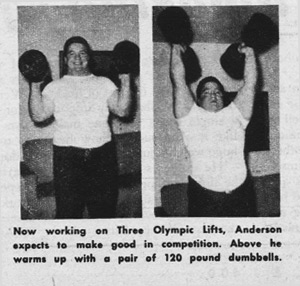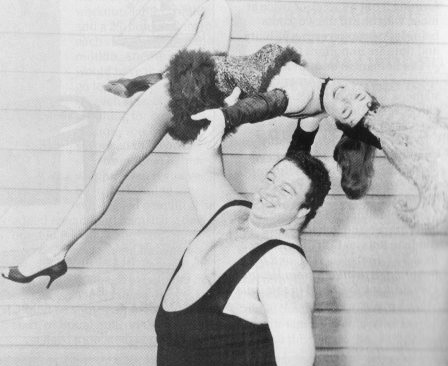(Updated July 2014.) One summer I decided I was going to bulk up. This was back when I was 130 pounds and sick and tired of being 130 pounds. I was working at an ad agency as a junior designer on the illustration team. I was new there, and also newly determined to gain 20 pounds. Drinking an entire bag of milk (1.3 litres) each day was part of my plan to do that.
Err … okay that’s not entirely accurate – I didn’t quite drink the entire bag each day. A couple months into the summer one of my particularly caffeinated coworkers started complaining to everyone that by the end of the day, each and every day, I would always finish the milk, leaving none for her afterwork coffee. She was appalled that I was so inconsiderate. I don’t blame her – drinking 1.3 litres each day of communal office milk is certainly an office foul. Shame on Shane.
When this was brought to my attention I felt awful. This was a really awkward situation. First, I had to tell her that I knew what she was saying behind my back, then that I understood her concerns … and then that I wasn’t drinking communal milk – I was bringing my own bag of milk in with me each morning. She’d been using my milk for her coffee throughout the day each day. At that point someone pointed out that there were communal milk and cream cartons in the door of the fridge. She wasn’t impressed: “How on earth would I know that? Who brings in milk to work like that?! You even have your own milk pitcher here … ”
Who brings milk to work like that? Desperate skinny boys who are trying to build muscle, that’s who. Milk’s a controversial drink though, and I’ve learned a lot since then about building muscle. So what’s the lowdown on milk?
Introducing “Muscel” Marcel

Marcel was one of our earliest members of Bony to Beastly. For over a year now he’s been one of the friendliest, most positive and most helpful guys in the community. He’s an Australian kid with an athletic build who assured us that he was an ectomorph. We didn’t believe him – he looked pretty buff – so he dug up some of his before photos.
Ectomorph indeed.
Marcel had already gained 40-50 pounds from training heavy and growing up (from 18 to 20) and was looking for a program that would help him past the plateau he’d hit at just under 180lbs.
He was telling us that at this point all he was managing to gain was fat. He had been trying GOMAD (gallon of milk per day) and then adding in weight gainer shakes on top of it to pump his calories up even higher. His strength wasn’t moving up anymore, he was feeling terrible and he was getting fatter.
I’d been there too. My “fat Shane” days were back when I was consuming ludicrous amounts of calories – many coming from weight gainer shakes. I mean, add in a ton of processed sugar and processed protein into your diet, combine it with a massive calorie surplus and you’ve got a recipe for two things: muscle and fat. During my “fat” days though I wasn’t even getting stronger or more muscular! Neither was Marcel.
That’s because there’s more to the puzzle than just calories, of course. Is milk a good source of nutritious calories?
That’s a tough question. There’s a lot of anti-milk media out there. Vegans have always been (understandably) at odds with milk, but ever since Paleo came along all of a sudden milk is more controversial than coke. (Err … the drink, not the drug.)
Interestingly enough though, Paleo isn’t actually totally at odds with dairy – at least not for us ectomorphs (and Paleo isn’t really designed for us anyway). Anyway, to quote one of the biggest names in Paleo, Robb Wolf: “Dairy is great if you place a premium on muscle/weight gain. My go‐to approach for a mass gain protocol is simply Paleo plus dairy. There are all kinds of people recommending the same approach; I think EliteFTS is calling it the Mountain Dog Diet. Former NFL lineman John Welbourn has seen remarkable results with his football program combined with Paleo + Dairy.”
Milk does have an impressive resumes when it comes to building fearsome amounts of mass. Check out 50’s strongman Paul Anderson, back when being a strong man was virtually unheard of:

Paul Anderson is one incredibly inspiring and incredibly scary example of milk’s amazing ability to make monsters out of men. On one hand, he became the strongest man in the world through smart training and consuming humungous quantities of milk. On the other hand he also got really really really fat and died in his 60’s ( … which actually isn’t so bad for a guy weighing nearly 400 pounds).

Milk: Muscle Saint or Monster?
Milk is pretty controversial, so the first things we need to consider when looking into a study or article concerning milk are the various biases. The dairy industry is a huge powerhouse (especially in the US) with a lot of money and political power behind it, vegans are against milk because it comes from domesticated animals, some people have milk allergies and intolerances, magazines are always primed to publish novel and controversial findings, some people come from cultures where milk is or isn’t socially acceptable, some guys spent their entire childhoods consuming loads of milk, etc. Overall some people love milk and some people hate it.
I don’t love it or hate it. I don’t have a moral issue with it either, and I’m not affiliated with any dairy lobbies or anything. I could never drink milk again and be totally happy. Or I could drink a litre a day for the rest of my life and still be totally happy. If it’s healthy and helpful I’m in … if it isn’t – I’m out. I’m pro-health and pro-results, so whenever I look into stuff relating to food I always try my best to be open-minded to whatever the science and research indicates.
So let’s dig in:
- We’ve been consuming animal milk for over 10,000 years. We eventually more or less settled on cows’ milk because it has a very mild and rather pleasant taste. (Carnivores have especially weird tasting milk, and thus we’ve never much been a fan of, say, dog milk.)
- Milk contains zinc, selenium and magnesium – three vitamins that bodybuilders and strength athletes often supplement with because of their effect on anabolic hormone production (like testosterone). It’s often fortified with vitamin D as well, which most people are deficient in. (It also contains vitamin A, vitamin b12, vitamin b6, niacin, thiamine, riboflavin, folate, potassium, calcium, etc.)
- The protein in milk has a favourable and balanced breakdown of amino acids (BCAAs), making it great for inducing muscle growth. We can process it to create whey protein powder and casein protein powder – two of the most famous muscle-building supplements out there. To quote Alan Aragon, arguably the most educated and evidence based nutrition expert out there: “Cow’s milk has among the most biologically available protein fractions in the known food supply. It’s a particularly potent dietary source of nutrients for the growth and maintenance of lean tissue in humans. Isolated whey and milk protein are among the highest-rating proteins across the various protein quality indexes.” (source)
- In the 1900s we became more aware of bone health and started to understand exactly how rich in nutrients milk was. Understandably, it became immensely popular and bigger industries started to get involved. At this point we started sterilizing and pasteurizing our milk. The sterilization process removes some of the nutrients, but also makes it safer to consume.
- Raw milk isn’t pasteurized, and thus supposedly retains more nutrients. It isn’t guaranteed to be free of bacteria though, so in some countries (and many US states) the legality of it varies. Moreover, studies are finding that the pasteurization of milk doesn’t seem to actually reduce the nutrient content of it anyway. (study) If you have a trusted source raw milk can be a good option. For most pasteurized milk is a better bet.
- We can ferment milk to create cheese, yogurt and kefir. All three can contain impressive amounts of probiotics. Probiotics (good bacteria) are great for our immune system and digestive health – two things we want in peak condition when skinny and trying to gain weight … and always … but especially when skinny and trying to gain weight.
- The protein found in the milk that we drink is mainly casein, which digests very slowly and steadily. (In supplement form casein isn’t as popular as whey protein, but it’s a popular and promising protein supplement as well.)
- Chili peppers contain an oil called capsaicin, which makes our taste buds sting. The casein in milk binds to fats (e.g. oils). It neutralizes the capsaicin and removes the pain. Water, beer, juice, etc., – they all just spread it around, often making it worse. Milk is thus the best drink to have alongside spicy food.
- Casein may also be (very mildly) addictive. Our bodies break it down into casomorphins, which is the nerdy younger sister of endorphins. The casomorphins in milk have about 1/10th the painkilling effect of morphine.
- Milk contains lactose, a very very slowly digested sugar, which some people have trouble digesting (making them bloated and nauseous). To digest lactose we use the digestive enzyme lactase, which some people have more of than others. Generally if you consume milk your body will start producing more lactase so you can better digest it. This means that even people who are lactose intolerant now can often become tolerant. Sometimes though, people still don’t produce enough lactase. It’s not common, but some people remain lactose intolerant despite regular consumption of milk. So they came out with lactose-free milk. Lactose free milk isn’t actually free of lactose – those tricksters – it just has the digestive enzyme lactase already in it, reducing our need to produce our own. All of a sudden we can digest the milk. (Since whey protein is just protein – no sugar, i.e., no lactose – most lactose intolerant dudes can still consume whey protein isolates.)
- Some studies indicate that some cultures digest milk better than others. People with Northern European blood handle it well, whereas many people of Asian and African descent struggle with it. (study)
- Switzerland, Australia and Sweden are in the top 10 countries for largest consumption of milk … and in the top 10 countries for longest life expectancy.
- Some people are actually allergic to milk, which is a whole different ballgame. Those people, and they probably know who they are, it should go without saying, shouldn’t be consuming milk. That’s fairly rare though.
- Most experts agree that milk is great for bone health and bone density, due to its calcium content. Some vegan experts disagree, and some even disagree that calcium is good for you (which would also mean avoiding spinach, soy and almonds). Robert Heany, one of the more respected researchers of bone health, put together a meta-analysis of all the studies looking into bone health and concluded that milk and calcium were fantastic.
- The “wholesomeness” of milk varies from country to country. Some milk, depending on where you live and what brand of milk you buy, may come from cows who were given hormones and/or antibiotics. The United States is pretty loosey goosey with their regulations, whereas many other countries, like Canada, Australia, Europe, Japan etc., restrict most of that stuff. Consuming antibiotics and hormones is very probably bad for us, but it’s uncertain whether consuming the small (nearly undetectable) quantities found in milk would produce any negative effects in us. Also, pasteurizing the milk may completely neutralize the bad stuff. I haven’t found any studies definitively showing that these kinds of milk are totally safe … or any showing that they aren’t. Some countries err on the side of caution, some err on the other side.
- Organic milk is very similar to regular milk … but in the States a key difference is that the cows aren’t given hormones or antibiotics. Most tests can’t detect a difference but this may be a safer bet for Americans, as most (if not all) of the studies linking milk to bad things, like cancer, are using processed milk from big industries that are giving their cows antibiotics and hormones. The good news for people living in the States though is that expensive hormone-free milk there is still cheaper than regular milk is in other countries, which is hormone-free by default and always expensive.
- Milk is incredibly balanced. 2% milk is 27% protein, 38% carbs, 35% fat. That’s a balanced meal on it’s own. (Looking for a meal while on the go? Pop into a corner store and grab a litre of milk.)
- Whole milk is the most anabolic. For some reason it seems to produce the best muscle growth. At first this was thought to be because it was higher in calories, but it turns out that even if you’re consuming the same amount of calories from skim milk as you are from whole milk, the whole milk still produces more muscle (even though the same caloric load of skim milk would have almost double the protein). This may because the processing of whole milk is less extreme, or that since many of the vitamins and minerals in milk are fat soluble, that whole milk contains more muscle-building micronutrients. When in doubt, go whole. (study)
What happened to Marcel and Me?
I had never been able to gain 20 pounds before, and oh man had I ever tried. The milk was just one component, but a really damn useful one. That bag of milk that I rather affordably enjoyed consuming each day added 700 calories, 45g of protein, 63g of carbs and 26g of fat into my diet. Not bad.
That brought me up to a not-quite-so-skeletal 150 pounds – into the realm of normalcy, finally – and put a stop to the skinny jokes once and for all. More importantly, it gave me the confidence I needed to go on and gain another 40 pounds. Now, at 190 pounds, milk is still a staple part of my diet, especially when busy or travelling, since it’s so accessible (and delicious).

And Marcel? He stopped with the gainers but kept on with the dairy. When Marcel described his diet it sounded something like this: “So I had breakfast along with a couple glasses of milk, and then a snack with another glass of milk, and then some milk, and then lunch with milk, and then I had some fish oil capsules washed down with some milk, and then dinner, and another glass of milk before bed.”
Marcel has just just crushed the 208 pound mark – and at a similar body fat percentage to when he started. That puts his total weight gain, 78 pounds, at more than mine (60 pounds). Prrrretty sweet for a 20 year old ectomorph who’s only been training for a couple years now. Best of all, after his massive success Marcel is now in the middle of a 16 week personal training course so that he can help other people accomplish their goals too.

The How-To Part
We’ve essentially got three options here, depending on how you feel about and respond to milk:
- If you’re looking to add milk into your diet start small – a cup of whole milk a day – and work your way up gradually. All of a sudden loading up on tons of dairy might overpower your body’s ability to digest it. (If you feel bloated or nauseous you’ve gone too far too fast – your body isn’t producing enough digestive enzymes yet.)
- If you already drink milk, you might want to try experimenting with drinking even more to see if you can build muscle even more quickly.
- If you’re allergic, intolerant or morally opposed – no worries. You can still build equally impressive amounts of muscle without it. This is just an option, not any kind of requirement.
So should you drink milk? That’s totally up to you. If you do decide to drink milk though you’ve got one incredibly powerful muscle-building food on your team. (study, study, study, study)